[Domestic] Peaceful Unification Bulletin No. 217 "'Today on the Border Area, Changes on the Front Lines of the Divide as Told by Residents,’ Tales of Life Heard Upon the End of the Loudspeaker Broadcast’"
- Media Communication Division
- 07-01-2025 ~ 08-01-2025
Peaceful Unification Bulletin No. 217 "'Today on the Border Area, Changes on the Front Lines of the Divide as Told by Residents,’ Tales of Life Heard Upon the End of the Loudspeaker Broadcast’"
It has been two months since North and South Korean loudspeakers stopped broadcasting. Residents of the border area have finally gotten back quiet nights. But tensions have not completely gone. The sounds of tanks and artillery, filth balloons, and the roar of anti-South Korean broadcasts still linger in their daily lives.
The PUAC invited residents of Ganghwa, Gimpo, and Cheorwon, who represent people living in the border areas, to a roundtable discussion on the reality of division x-x-embedded in their lives and the meaning of peace. Participants in the discussion included Konkuk University Professor Jeon Yong-sun (moderator), Ganghwasum Kimchi CEO Kim Gyeong-ho (Ganghwa-gun, Incheon), Gimpo History and Culture Institute Director Jo Min-jae (Gimpo-si, Gyeonggi-do), and Border Area Residential Environment Research Institute Director Shin Hye-jeong (Cheorwon-gun, Gangwon-do).
Compiled by Jo Eun-kyeom. Photo by Park Chang-su Video by Choi Ui-in
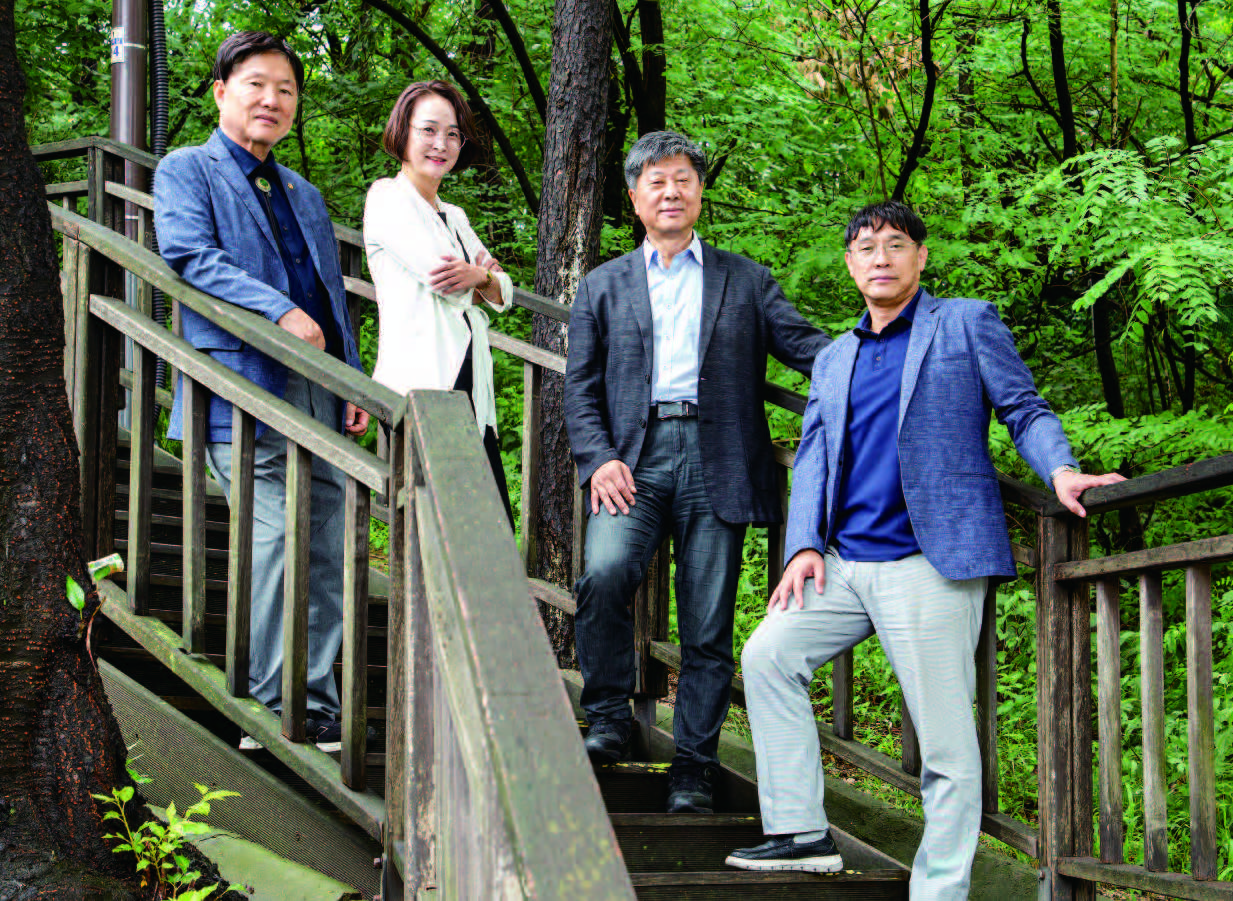
- Professor, Unification Humanities Research Group, Konkuk University
- Council member, Central Committee member for 13th, 15th, and 21st PUAC
Discussion
Kim Gyeong-ho (Ganghwa-gun, Incheon)
- CEO of Ganghwasum Kimchi
- 18th-21st Council member, Chapter head for the 21st PUAC
Jo Min-jae (Gimpo, Gyeonggi-do Province)
- Director of Gimpo History and Culture Institute
- 18th-21st Council member
Shin Hye-jeong (Cheorwon-gun, Gangwon-do)
- Director of the Border Area Residential Environment Research Institute
- 19th-21st-term PUAC members
Childhood listening to tanks and cannons as birdsong
Moderator: First, please introduce yourself, focusing on your experience living in the border region.
Shin Hye-jeong: I was born and raised in Cheorwon. When I was a child, my daily life was always filled with the sounds of tanks and cannons. At night, we were not allowed to let a single light shine through, and the deafening North Korean anti-South broadcast was everywhere like the air. When I moved back to Cheorwon after living in Seoul for a while, the quiet night air was so foreign to me. In Cheorwon, day and night are different: during the day, tanks roll by blocking the roads, and cannon fires shake buildings. Children grew up hearing those sounds as if they were birdsong.
Jo Min-jae: I grew up in Gimpo. My most memorable childhood experience was picking up North Korean propaganda leaflets. Gimpo is surrounded by a steel fence on three sides. Rapid urbanization has dulled the sensation, but one can always see the fence when he goes outside. People live here with the reality of the division.
Kim Gyeong-ho: Ganghwa is a pristine agricultural area and a tourist destination. It is one of the first places to get uneasy when inter-Korean relations are strained. During the farming season, restrictions on vehicle movement make it difficult to transport fertilizer, which make farmers suffer economically. Whenever military tensions rise, the first thing residents worry about is, "What will happen this time?
Filth Balloons and anti-South Korean Broadcast Disrupt Normal Life Moderator: Over the past year, North Korea's filth balloons and anti-South Korean broadcast have directly affected border area residents. Do you have any examples of this experience?
Shin Hye-jeong: Balloons landed in the rice fields behind my village. The garbage bag burst and we had to grind it up with a farming machine. We have been very anxious ever since. Villagers call the anti-South broadcast 'ghost sound.' Many neighbors suffered from insomnia due to the rumbling sound, and one villager lost a day's business because a balloon fell in front of his restaurant.
Jo Min-jae: Gimpo has grown into a big city with a population of 500,000 people, but the filth balloons still cause anxiety. There was even an incident near Gimpo Airport where a balloon that fell on an auto parts factory caused a fire. Balloons like these threaten the safety of residents.
"The sound of anti-South broadcast blaring at dawn was like the sound of ghosts. Children couldn't sleep, and livestock refused to eat."
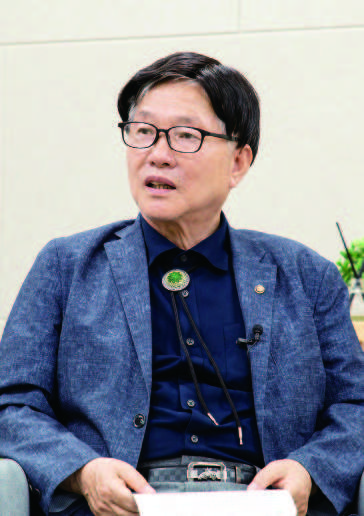
Kim Gyeong-ho, CEO of Ganghwasum Kimchi
Kim Gyeong-ho: Ganghwa was the hardest hit. Residents were unable to sleep due to the sound of the broadcast at dawn, and children had to visit hospital due to anxiety. Farmers also suffered losses as their livestock that were frightened by the noise and stopped eating. Some homes installed soundproofing devices, but it was not enough to protect all the villagers.
Quiet nights restored after anti-South broadcasts stopped
Moderator: One of the biggest changes since the new government took office is the suspension of anti-South broadcasts. There are hopes that this will lead to momentum in improving inter-Korean relations. Have you seen any noticeable changes?
Kim Gyeong-ho: When the South stopped the broadcasts immediately after the president took office, North Korea stopped anti-South broadcasts as well. At that moment, the village immediately regained its calm. Previously, some residents were hospitalized because of the broadcasts, and there were a lot of complaints, but when the sound disappeared, the complaints decreased remarkably. The whole atmosphere of the village changed.
"Border area chapters need to interact with each other and work in solidarity. However small the events may be, we need to carry on them in order to keep the flame of peace alive"
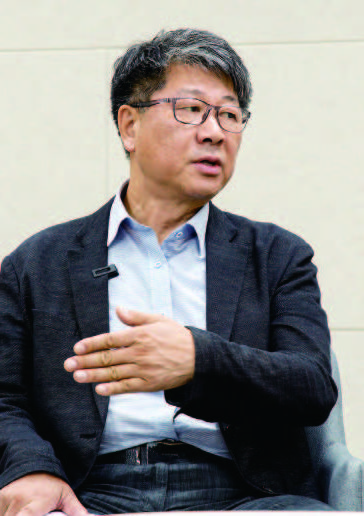
Jo Min-jae, director of the Gimpo History and Culture Institute: Jo Min-jae: I hope the current calm will continue and become an opportunity for peaceful interaction and communication between the two Koreas. I hope that it will not be a one-time change, but a lasting flow of peace.
Shin Hye-jeong: As soon as the anti-South broadcasts stopped, Cheorwon quickly regained the sense of security that he had been absent just a year ago. I feel more relaxed and stable, and most importantly, I sleep better. This is the biggest change. Farmers start their day at four in the morning. We have a different lifestyle than office workers. We have to go to sleep at 8 or 9 p.m., and we couldn't sleep well because the broadcast was blaring nx-onstop at that time. Now I can sleep whenever I want to sleep and wake up whenever I want to wake up because I don't hear anything. This has reenergized my body and mind, and my life has returned to normal. This is the greatest peace the residents feel.
Border area is a land of regulations and opportunities
All three panelists agreed that the natural environment and historical and cultural resources of the border are great assets. They also pointed out that opportunities for development are limited by military reserves, development restrictions, and lack of road infrastructure.
Moderator: What are the advantages of living in the border area, and how can it affect regional development and changes in inter-Korean relations?
Jo Min-jae: Gimpo has a rich cultural heritage and geographical advantages, but it is difficult to fully utilize them due to the iron fence and various regulations. Support policy is needed so that its historical resources can lead to storytelling and develop the area into a center of exchanges.
Shin Hye-jeong: Cheorwon has a large size of farmland, but it is difficult to transport agricultural products due to the lack of roads. It is urgent to expand the transportation network to support the residents' stable livelihood.
Kim Gyeong-ho: Ganghwa's strengths are its well-preserved natural environment and good soil for farming. It also has a lot of historical and security tourism resources due to its location near the military demarcation line, which give it great potential for the tourism industry. However, the region is losing its vitality due to rapid population outflow and aging. It needs to improve settlement conditions by expanding sales and processing facilities for local specialties and facilitating the influx of young people.
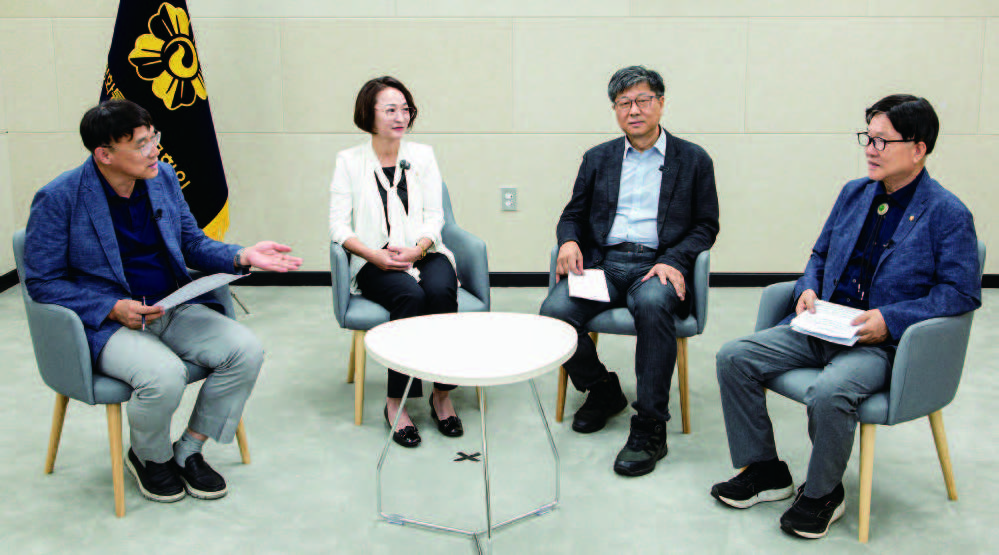
Education and experience are the best ways to heal the wounds of internal conflict
Moderator: In recent years, social divisions have become so intense that the phrases "South-South conflict" and "gender conflict" have become commonplace in South Korean society. What can we do to promote internal reconciliation and understanding?
Kim Gyeong-ho: I think the section of the barbed wire fence along the coastal beach could be turned into a walking path, where residents can experience peace and solidarity instead of competition. Ganghwa once organized walking event, and if the central and local governments pay more attention, there will be more opportunities for locals to get together naturally.
Shin Hye-jeong: In the past, we grew up singing 'Our Wish is Unification' song unconsciously. Today's students have a much vaguer concept of division and unification than our generation. I think students need to get firsthand experience by being inside the Demilitarized Zone. To do this, unification education should be made a mandatory subject in school curriculums, with the central and local governments systematically supporting safe experience programs.
Jo Min-jae: Gimpo is a young city with an average age of early 40s, and more than 90% of the population is from outside the city. In such an environment, old-type ideological education is not effective; rather, it needs peace and security programs that focus on youth and involve families. Gimpo Jangneung and the barbed wire fence area are rich in historical resources. When we remember the time when the Han River and Imjin River were one and understand its meaning, we can naturally realize the need for unification and the significance of peace, exchange, and cooperation.
From the 'Peace Path' to the 'Cooperative Path'
Moderator: It sounds like you're suggesting that local residents should make efforts to communicate with each other using their resources and values and take them into peaceful unification. If so, I'm wondering if local governments have any specific policies or measures in place to support such efforts.
Jo Min-jae: Gimpo is undergoing rapid urbanization, with its characteristics as a border area fading. In the past, it was a center for inter-Korean exchanges, such as the Kaesong Industrial Complex, but now it is losing out to issues of the Seoul metropolitan area such as railroads. The changes in policy direction made by each new government are also a restricting factor. The region continues to make efforts at the local level, but there are limitations.
Kim Gyeong-ho: Ganghwa has a large area of land, such as Gyodong. I think we can build factories there, and we can also envision living together with North Koreans in the future. We need to go beyond preserving the land and make it a space where South and North Koreans can utilize resources and prosper together.
Jo Min-jae: PUAC council members have been organizing campaigns and events based on the Peace Nuri Trail for the past 10 years. In Gimpo, murals were painted on the walls under the barbed wire fence so that citizens could feel the meaning of peace. We also hold events, local tours, and volunteer activities for North Korean refugees and multicultural families. There are many resources that can be shared by connecting Gimpo, Ganghwa, Paju, and Gangseo-gu in Seoul as one cultural zone. It would be effective if the PUAC actively mediates them.
Once, we had a mutual visit with Yeonje-gu, Busan. Everyone was very surprised to realize that 'we are only 1.4 kilometers away from North Korea' and experienced the reality of the division. Even the same border area has a different atmosphere, so it would be meaningful if the border area chapters such as Cheorwon, Ganghwa, and Yeoncheon took turns to visit each other and share programs.
Shin Hye-jeong: Cheorwon hosts the DMZ Marathon and music festival. However, there is still a lack of projects that are directly linked at the chapter level. We once held a walkathon starting from Imjingak in Paju and ending at the halfway point in Cheorwon. I think it should be a task for the chapters in the border area to join forces to co-organize events and share their achievements.
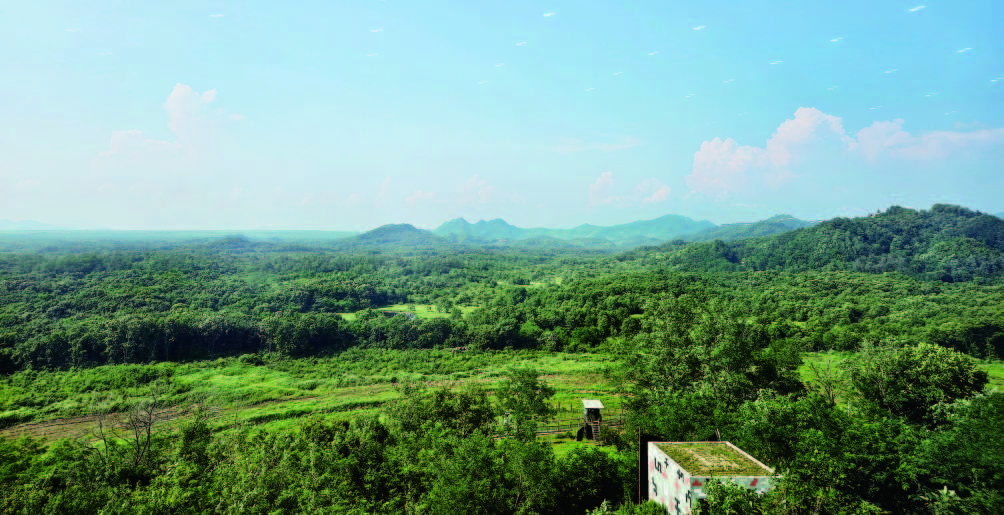
A future where landmines disappear and children learn the value of peace
Moderator: As a resident of the border area, what do you hope to see in inter-Korean relations?
Kim Gyeong-ho: When the three regional chapters of Ganghwa, Gimpo, and Cheorwon come together to talk, the need to stop anti-North Korean broadcasts comes up consistently. People living along the border are suffering greatly. The damage they suffer in daily lives is accumulating, and the central and local governments need to think seriously. I hope that the PUAC will lead an atmosphere of harmony and deliver the voices of the area.
Jo Min-jae: I think everyone has the same hope. We have long hoped that inter-Korean relations would improve and that peaceful exchanges would become more active. But it's not easy to get what we want at the government level. Therefore, I think the local chapters need to show our will to keep the peace with concrete actions. When PUAC members stand in solidarity and their activities are publicized in the media and the center, the government can see the will of the people. Even if it's difficult to change macro-level policies right away, locals need to continue with practical activities.
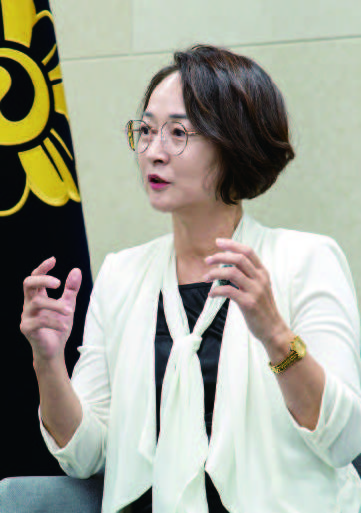
Shin Hye-jeong: Cheorwon has recently strengthened executive order and crackdown to stop anti-North Korean propaganda leaflets from being flown. It is positive that suspicious vehicles have been stopped in advance to reduce the anxiety of residents. However, I think the most important thing is to 'make peace without fighting'. Budget is a real obstacle, but border area chapters need to join forces to jointly organize events and let people know that North Korea is close by. Also, we need to educate children step by step. The experience of seeing and feeling North Korea and learning the value of peace can draw their attention and empathy, which in turn will shape their future.
"We need education that allows children to see and experience North Korea firsthand. The PUAC can play that role."
Shin Hye-jeong, Director of the Border Area Residential Environment Institute
From today's daily life to tomorrow's hope
The stories given by the residents of the border area at the roundtable went beyond providing local voices and reminded us of the need for the historical task of peace and unification on the Korean Peninsula. For the generations who have endured the sounds of tanks and cannons as their daily routine, and for the residents who have continued to live their lives amidst filth balloons and the noise of loudspeakers, peace is not a distant discourse, but a ' today’s daily life’ and a 'hope for tomorrow.' They emphasized that peace is the night they can sleep comfortably, the village where their children can play and run around without fear, and the way for the region to prosper together overcoming the scars of division. They also made it clear that it is important for the PUAC to serve as a bridge between the various resources and voices of the region and continue even small activities.
As the roundtable showed, peace is a task that needs to be implemented and created here and now. Peace on the Korean Peninsula will be one step closer when the voices of the people along the border are amplified and their experiences are shared with empathy and solidarity.
-
How satisfied are you with the information you have reviewed?







